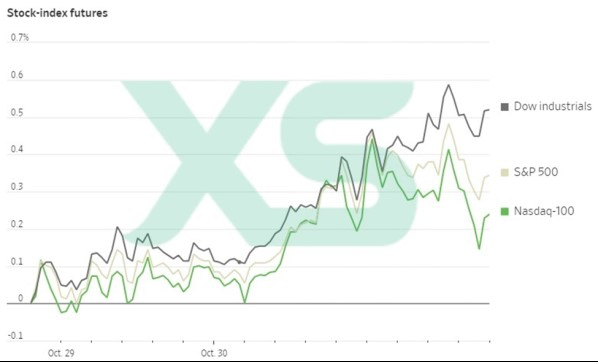When looking at today’s market movement, we can see that the Dow Jones Index has been showing a significant recovery since the opening and is currently trading at 32,690.5 points.
This comes after the index witnessed a negative close last week, especially following a sharp drop on Friday, which raised concerns and anxiety among investors and traders in the American stock markets.
Before this sharp decline, the Dow Jones Index was holding onto a key support level at 38.2% Fibonacci retracement, consistently trading above the 32,900-point level, which represented strong support with a higher likelihood of price rebound. However, it closed below this level firmly.
I believe that the tumultuous events of last Friday have changed the rules of the game in the American stock market, especially after the price breached the mentioned support level, sounding alarm bells in the American stock market and triggering a sell signal and a strong downward trend on both fundamental and technical levels.
As of now, despite attempts at recovery, the descent continues to dominate Dow Jones Index trading. With the index dropping to unprecedented levels since March 2023, the question here is: Have the rules of the game in the American stock market truly changed?
To answer that, I say yes. By the end of last week, the risk appetite began to improve at the start of this week due to the absence of a real ground invasion in Gaza.
Stock markets had started to decline since last Wednesday, with Prime Minister Netanyahu delivering a speech in which he stated that they were preparing for a ground invasion.
Over the weekend, we received reports of an actual ground attack, but it failed. So, we will see how things develop during the current week. Simultaneously, the market will have to digest and price a lot of important economic data.
Furthermore, the U.S. unemployment claims data showed a significant increase last Thursday, coming close to expectations, which could indicate weakness in the labor market. On Friday, risk sentiment deteriorated further, as market participants may not have wanted to hold onto long positions heading into the weekend, especially after reports of the start of a ground invasion in Gaza.

The movement of the U.S. stock futures markets on 30 October 2023
After the recent events and as seen in the chart above, U.S. stock futures have shown a rebound at the start of Monday’s trading. I believe the reason for this is the approaching end of the monthly closing, accompanied by more corporate earnings results. However, we can see the weakness in the S&P 500 and Nasdaq indices in the correction zone, indicating the possibility of continuing the 10% decline from the recent peak.
Now, the companies listed on the S&P 500 are preparing to report growth in first-quarter earnings, but this hasn’t done much to boost stocks, as investors have remained focused on the bond sell-off, which briefly pushed the 10-year yield above 5%. This is causing overall market concerns.
I believe that Apple’s earnings on the upcoming Thursday will be the main focus this week, especially if the ground invasion of Gaza continues to fail. Caterpillar and Pfizer will also present their reports in the coming days. However, the markets are eagerly awaiting the Federal Reserve’s decision on interest rates next Wednesday, which is expected to leave interest rates unchanged. The markets are also looking forward to the October jobs report next Friday.
In my opinion, this week will be crucial for the U.S. stock markets, which have already started declining. We will receive a lot of high-impact data, with a focus on the U.S. labor market and the Open Market Committee’s interest rate decision.
The U.S. Employment Cost Index and the Consumer Confidence report will be released tomorrow. On Wednesday, the U.S. ADP employment report, the ISM Manufacturing Purchasing Managers’ Index, and the interest rate decision from the Federal Open Market Committee will be announced.
On Thursday, we will have U.S. unemployment claims data, and we will conclude the week with the U.S. Non-Farm Payrolls report and the ISM Services Purchasing Managers’ Index. All of these figures will play a significant role in the decision to maintain higher interest rates for a longer time than expected, thus putting pressure on stock markets and supporting the strength of the U.S. dollar, in my view.



